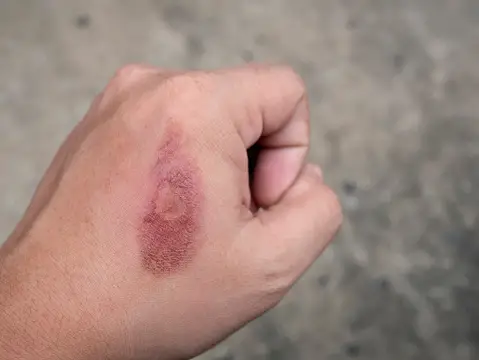Burn injuries can happen anytime and anywhere due to heat, friction, steam, electrics, etc., and especially women and children are mostly affected by them. Burns cause severe skin damage in a way that the affected area skin cells die. Careful treatment by the best burn surgeon in Lahore can help avoid pain, scars, and infections. Here we have jotted the critical information regarding the burn wounds
Let’s start!
Skin Layers
The human body has three layers of skin called:
-
Epidermis: The outermost skin layer
-
Dermis: It is the layer of the tissue just beneath the epidermis. It contains the blood capillaries, nerve endings, sweat glands, hair follicles, etc.
-
Hypodermis: Also called the subcutaneous fat or subcutis, it is the deeper layer of fat and connective tissues.
Burn Types
Following the wound severity and harm to the skin (the layers mentioned above), the burns are divided into three types.
First Degree Burn
It is a minor burn in the sense of skin damage, as the outer layer of the skin (epidermis) is affected only. Typically, the patient might have red skin or be swollen; however, the chances of blisters and long-term impairment are pretty less. A typical example of First-degree burns is sunburn.
Second Degree Burn
When the dermis (tissue layer underneath) alongside the outer layer of the skin is damaged, it is a second-degree burn. Another name for this burn is partial thickness burn. Typically, such burns are painful and cause the skin to be red, swollen, and blistered.
Moreover, such burns often bleed too or take 1 to 3 weeks to heal or even left discolored skin upon healing. In rare cases, especially with penetrated second-degree burns, wound treatment might need surgery.
Third Degree Burn
The most severe burn level is the third degree known as full-thickness burns – it affects the skin layers underlying bones, muscles, and tendons too. Mostly the affected area’s skin feels dry and leathery and turns white, black, gray.
Considering the burn severity, the skin grafts technique is used; otherwise, the wounds take months or even years for healing. In addition, these burns have a high risk of infection and often leave raised scars.
Even minor burns (first degree) can turn into severe wounds; therefore, never neglect the proper treatment. Furthermore, it is always recommended to treat burn wounds or injuries from the best burn surgeon in Lahore from the start.
Conditional to the affected (burnt) area, the severity of the burn, and the patient’s age, the burn injury needs different surgeries. For instance, naming a few includes skin grafts, microsurgery, flap surgery, tissue expansion. To get these surgeries in case of severe burn wounds, consult the best burn surgeon in Lahore. Obviously, an expert surgeon can help eradicate all the chances of the scars, blisters, etc., from the skin thoroughly.







